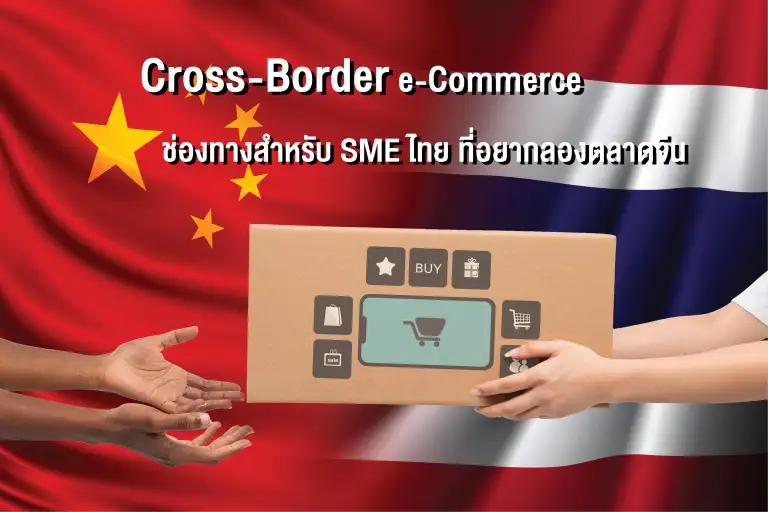Cross-Border e-Commerce: A Channel for Thai SMEs to Explore the Chinese Market
October, 19 2021

The Growth of Cross-Border e-Commerce in China
Statistics show that from 2015 to 2020, the number of import-export businesses in China using Cross-Border e-Commerce increased annually. In 2020, Cross-Border e-Commerce accounted for 38.86% of China's total import-export value.
In the first half of 2021, the market size of China’s Cross-Border e-Commerce was 6.05 trillion yuan, representing 33.48% of the country's total trade. By the end of 2021, it was expected to reach 14.6 trillion yuan.
Cross-Border e-Commerce: An Opportunity for Thai SMEs
For Thai SMEs, Cross-Border e-Commerce is still a relatively new marketing channel. Unlike traditional trade, Cross-Border e-Commerce allows foreign goods to enter China's Free Trade Zones (FTZs) under special customs regulations. Import licenses are not required, and products can only be sold via Cross-Border e-Commerce platforms. This process is more convenient and involves fewer documents than general importation.
This method enables Thai SMEs to test the Chinese market before fully entering it. It reduces operational costs, minimizes risks of unsold inventory, and avoids product expiration or spoilage. If a product succeeds, businesses can later transition to regular imports, reducing long-term costs and expanding sales channels through online and offline markets, including department stores and physical brand stores.
Leading Cross-Border e-Commerce Platforms in China
According to iiMedia Research (May 2021), China’s top Cross-Border e-Commerce platforms include:
- Tmall Global
- Kaola.com
- Jingdong International
- Suning International
However, these platforms require high initial investments. For example, Tmall Global charges an annual service fee of 30,000–60,000 yuan, plus a deposit starting from 50,000 yuan, depending on the product category and store type. This may not be suitable for Thai SMEs with limited budgets.
Meanwhile, emerging platforms such as Pinduoduo, Kuaishou, and TikTok offer lower startup costs. These platforms have different strengths:
-
Pinduoduo: Focuses on low-priced products. It uses a unique marketing strategy where buyers get discounts when purchasing with friends, effectively turning customers into brand promoters. In 2020, Pinduoduo had 788.4 million users, about 11 times the population of Thailand.
-
Kuaishou & TikTok: Specialize in short video content and live-streaming e-commerce, allowing sellers to attach product links to videos. Customers can purchase products instantly while watching a video.
Benefits of Cross-Border e-Commerce
- Direct-to-Consumer Sales: Reduces intermediaries in the supply chain, increasing profit margins.
- Simplified Import Process: Avoids complex procedures such as FDA registration and importer licensing.
- Ideal for Regulated Products: Beneficial for supplements, cosmetics, and organic products that face strict import regulations under General Trade.
Thailand’s Success in Cross-Border e-Commerce
China’s General Administration of Customs reported that in 2020, imports from Thailand via Cross-Border e-Commerce totaled $2.17 billion, growing 129.8%, ranking fourth after Malaysia, Singapore, and Japan. This reflects the growing Chinese consumer demand for foreign goods, including Thai products.
Key Takeaways for Thai SMEs
- Cross-Border e-Commerce is an effective way to test the Chinese market with lower risks and costs.
- If successful, businesses can transition to general trade for long-term growth.
- Choosing the right e-commerce platform is crucial to maximize success.
- Working with reliable logistics and business partners is essential to navigate regulations effectively.
Before entering Cross-Border e-Commerce, Thai businesses should thoroughly study China’s import regulations, platform policies, and market trends to make informed decisions.
Source:
- Thai Business Information Center in China, Royal Thai Consulate-General in Chengdu